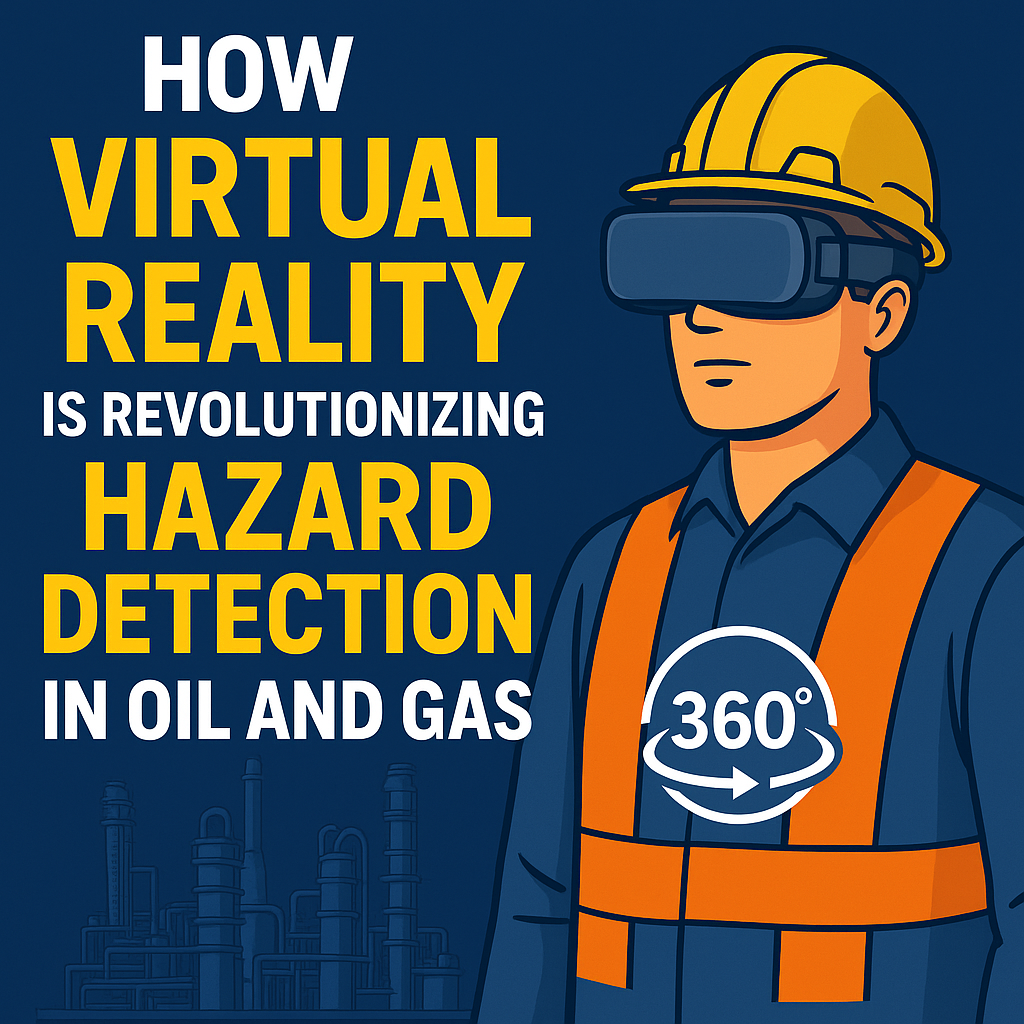🛢️ How Virtual Reality is Revolutionizing Hazard Detection in Oil and Gas Sites 🚨
The oil and gas industry is no stranger to high-risk environments. From deepwater rigs to remote refineries, hazard detection is mission-critical to protect workers, reduce downtime, and avoid catastrophic incidents. But what if traditional inspections and training aren’t enough?
Enter Virtual Reality (VR) — a groundbreaking technology that’s transforming how teams identify hazards, train for safety, and respond to emergencies before they happen. 🚀
In this article, we’ll explore how VR is changing the game in oil and gas safety — and how your team can benefit today. 👷♀️🧯
🌐 The Challenge: Traditional Hazard Detection Falls Short
Despite strict regulations and manual safety checks, many sites still rely on:
- 📋 Paper checklists
- 🗣️ Verbal safety briefings
- 📷 2D photos and schematics
- 👀 Visual inspections only after equipment is in use
These approaches are limited in scope and often reactive — not proactive. Workers may overlook subtle risks, skip training modules, or struggle to visualize danger zones before stepping on-site.
🔗 Related: Boost Safety in Oil and Gas with VR-Based Hazard Recognition Virtual Tours
🎯 The VR Advantage: Immersive Hazard Detection
Virtual Reality provides a 360-degree view of real-world environments — with added digital overlays for training, documentation, and alerts. Here’s how it’s changing hazard detection:
✅ 1. Simulate Real Hazards Before Deployment
Engineers can walk through a VR-rendered site and spot risks before construction or drilling even begins. Think open flame zones, gas leak points, or electrical hazards — all mapped out virtually. 🔥⚡
✅ 2. Layer Safety Data on Top of 3D Spaces
Want to highlight a hot surface warning or required PPE zone? VR lets you overlay safety signage, procedures, and documentation directly within the virtual space.
🔗 Related: Digitize Oil and Gas Emergency Protocols with 360 Virtual Tour Software
✅ 3. Train Staff in a No-Risk, High-Fidelity Environment
New team members can “walk” through the worksite and identify hazards as if they were physically there — without putting themselves at risk. 🎓
👁️🗨️ Real-Life Hazard Scenarios Simulated in VR
- 🔥 Flammable chemical zones with explosion proximity indicators
- ⚡ Overhead power lines and confined electrical panels
- 🧪 Leaking tanks or pressure vessels
- 🏗️ Unstable scaffolding or open trench warnings
- 🧍♂️ Blind spots behind heavy equipment
- 🚪 Emergency exits blocked in simulated evacuations
These aren’t just simulations — they’re interactive learning experiences that improve hazard recognition retention up to 75%.
🔗 Related: Step Into Safety: 360 Virtual Tours for Oil and Gas Emergency Simulations
📊 Results That Speak for Themselves
Companies deploying VR hazard detection programs have reported:
- ⏱️ 30–50% faster safety training times
- 📉 Reduction in near-miss incidents
- 💵 Lower insurance premiums and downtime costs
- 🎯 Increased compliance and OSHA readiness
🔗 Related: Boost Oil and Gas Emergency Readiness with 360° Documentation and Virtual Tours
🧰 Build Your Own Hazard Detection VR System
Here’s how to get started:
1. Capture Your Site in 360°
Use cameras like Ricoh Theta Z1 or Insta360 Pro to photograph your facility or training site. 🌐
2. Upload to a Virtual Tour Platform
Platforms like CloudPano allow you to build interactive tours, add hotspots, and embed hazard data.
3. Add Safety Documentation & SOPs
Embed training videos, hazard IDs, and MSDS documents directly in the virtual tour. 🗂️
4. Use Quizzes & Checklists for Evaluation
Gamify hazard detection by challenging workers to identify risks in the simulation. 🧠
🔗 Related: How 360 Documentation Software Powers Oil and Gas Emergency Response Training
🧠 Why VR Training Outperforms PowerPoints
Traditional training is passive. VR training is experiential. In a recent study, employees trained in VR were:
- 📈 4x more focused
- ⏱️ Trained in 50% less time
- 🧠 Retained 75% more info after 2 weeks
That means better safety outcomes, fewer retrainings, and a workforce that’s always ready.
🔗 Related: Why 360 Virtual Tours Are the Future of Emergency Training in Oil and Gas
🔐 Compliance, Documentation & Recordkeeping
Virtual tours allow you to document and time-stamp hazard training sessions — proving that each worker:
- ✅ Completed training
- ✅ Recognized key hazards
- ✅ Passed a checklist or assessment
Perfect for OSHA audits, insurance documentation, or internal safety compliance tracking.
🔄 Extend VR Beyond Hazard Detection
Once you digitize your facility in VR, you can use it for:
- 📚 Onboarding new workers
- 🚨 Emergency evacuation drills
- 🔁 Continuous safety refreshers
- 🧪 Crisis simulations and response training
🔗 Related: Train for Oil and Gas Emergencies with 360 Virtual Tours and Smart Documentation Tools
🏁 Final Thoughts: Hazard Detection Meets the Future
The days of clipboards and guesswork are over. In an industry where hazards can mean life or death, Virtual Reality offers precision, immersion, and scalability.
By simulating hazards in 360° environments, oil and gas companies can detect threats earlier, train smarter, and operate safer.
Ready to step into the future of oil and gas safety?
📣 Get Started Today
Build your own VR hazard detection system with CloudPano.com — the fastest way to create, publish, and train your team using interactive 360° virtual tours.
🔗 Keep Exploring Safety Innovation:














.png)



.png)





.png)

.png)





